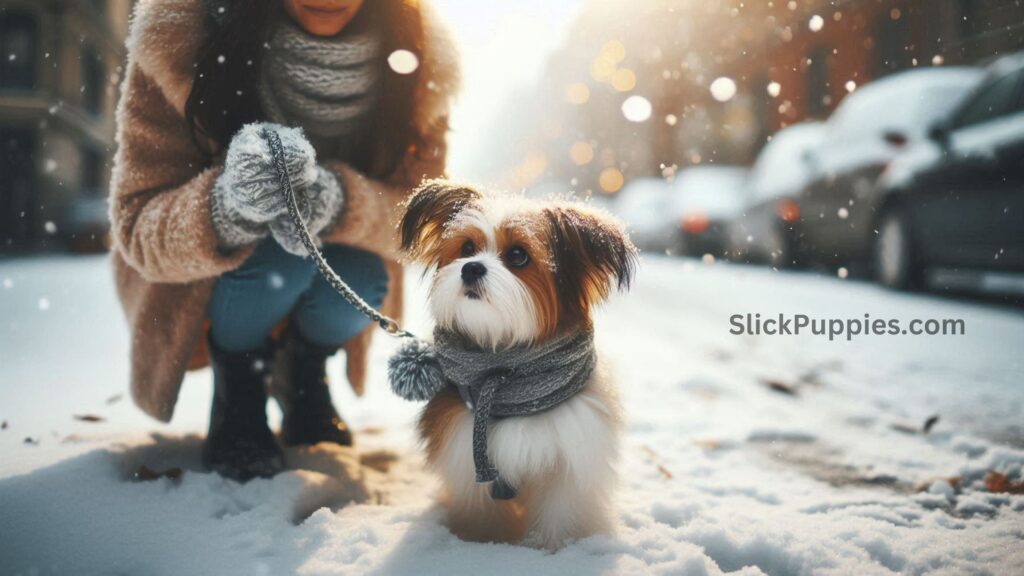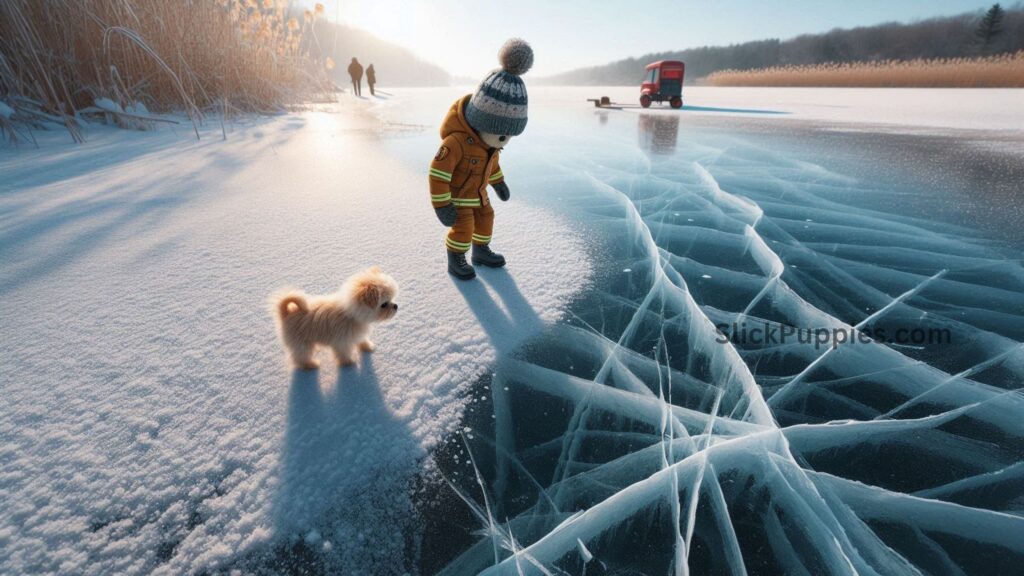Snow, sleet, ice, and wind—winter weather brings a lot to prepare for! Just like us, dogs feel the cold too. Here are a few easy ways you can help keep your dog warm, happy, and healthy all winter long.
Limit Your Dog’s Time Outside

Dogs can get frostbite, especially on their ears and tail tips. In really cold weather, it’s best to keep dogs indoors, except for the thick-coated northern breeds that actually enjoy the cold. If they have to be outside, watch for signs of frostbite, like skin that looks white or blue.
Stay Indoors When Possible
Even a big, fluffy dog that stays indoors will need some time to get used to freezing temperatures. Short trips outside will help your dog adjust to the cold. You can keep things fun indoors too by trying new games. There are also tons of interactive dog toys that are perfect for giving your dog both mental and physical exercise.
Bundle Your Dog Up
Sure, dogs have their own fur coats, but you wouldn’t want to head out in a blizzard wearing just a light spring jacket, right? Make sure small, delicate, and short-haired dogs (even bigger ones like Greyhounds) have the right winter gear—like a warm, sturdy coat and a snug sweater—to keep them cozy.
Consider Your Dog’s Age

When it comes to the weather, age really matters. Just like people, puppies and older dogs struggle to keep their body temperature stable. This means they can be more sensitive to weather changes. Snowy playtime might be too much for their more delicate bodies. So, it’s a good idea to keep your older dogs and puppies inside as much as you can.
Also Read: What Dog Breed is Best for Apartment Living?
Protect Your Dog’s Paws
If you look at the Iditarod sled dog teams, you’ll see that their paws are protected by booties. Mushers know that a race can be lost due to injuries or cuts from running on ice. Even if your dog isn’t racing through the Alaskan wilderness, winter weather can still hurt their paws. Luckily, many stores sell dog boots or paw protectors that can keep your dog’s feet safe and sound.
Invest in a Heated Dog Bed
Yes, heated dog beds are safe! They can be a great choice for dogs that get cold easily, especially older dogs. Just make sure to choose one that has an auto-shutoff feature and is designed specifically for pets. There are plenty of heated dog beds and heating pads available to keep your furry friend warm and cozy.
Trim Foot Fuzz

The hair on long-haired dogs’ feet can trap ice and snow between their pads and toes, forming ice balls. To prevent this, make sure to trim the hair so it’s level with the surface of their feet.
Clean Your Dog’s Feet
City streets are often treated with deicing substances like rock salt and calcium chloride to keep sidewalks safe. However, these can hurt your dog’s paw pads. To help, clean off your dog’s feet when they come inside. Some people keep a bucket by the door to rinse their dog’s paws with warm water, making sure to get between the toes and pads. If your dog has dry skin, you might also want to use a paw balm (you can buy one or even make your own) to keep their paws moisturized.
Have a Plan if You Lose Power
Winter weather can be unpredictable. With freezing temperatures and snowstorms, power lines can freeze and go out. If you lose power this winter, make sure you have a plan to keep your dog warm and comfortable.
Avoid Thin Ice

We often hear stories of dogs being rescued from icy waters (and luckily, some make it out). It might look fun to slide across a frozen pond, but the ice can crack easily, and both you and your dog could fall in. Plus, slipping on ice can cause muscle strains and other injuries.
Also Read: What Dog Breed is Best for Apartment Living?
Beware of Antifreeze
Even a small amount of antifreeze, like just a teaspoon, can cause kidney failure in dogs. Keep an eye out for signs that your dog might have swallowed some, like drooling, vomiting, seizures, excessive thirst, panting, being extra tired, or acting like they’re drunk.
If you think your dog has ingested antifreeze, take them to the vet right away. Even if you store it safely, there’s still a risk from residue on the streets. Antifreeze is usually green, but it can come in different colors, so be careful where your dog is sniffing.
If your dog experiences any winter-related issues, don’t hesitate to reach out to your vet.



